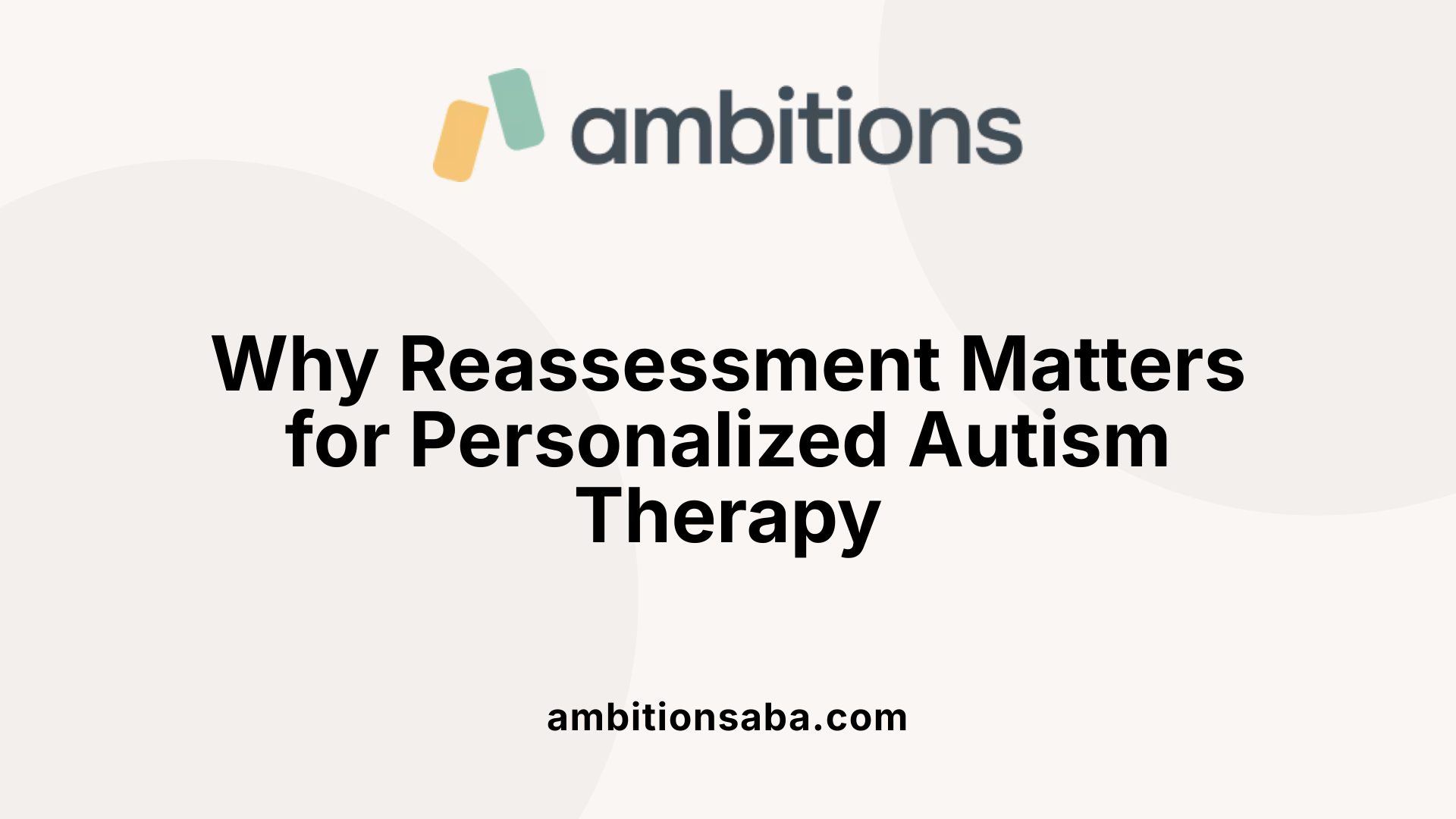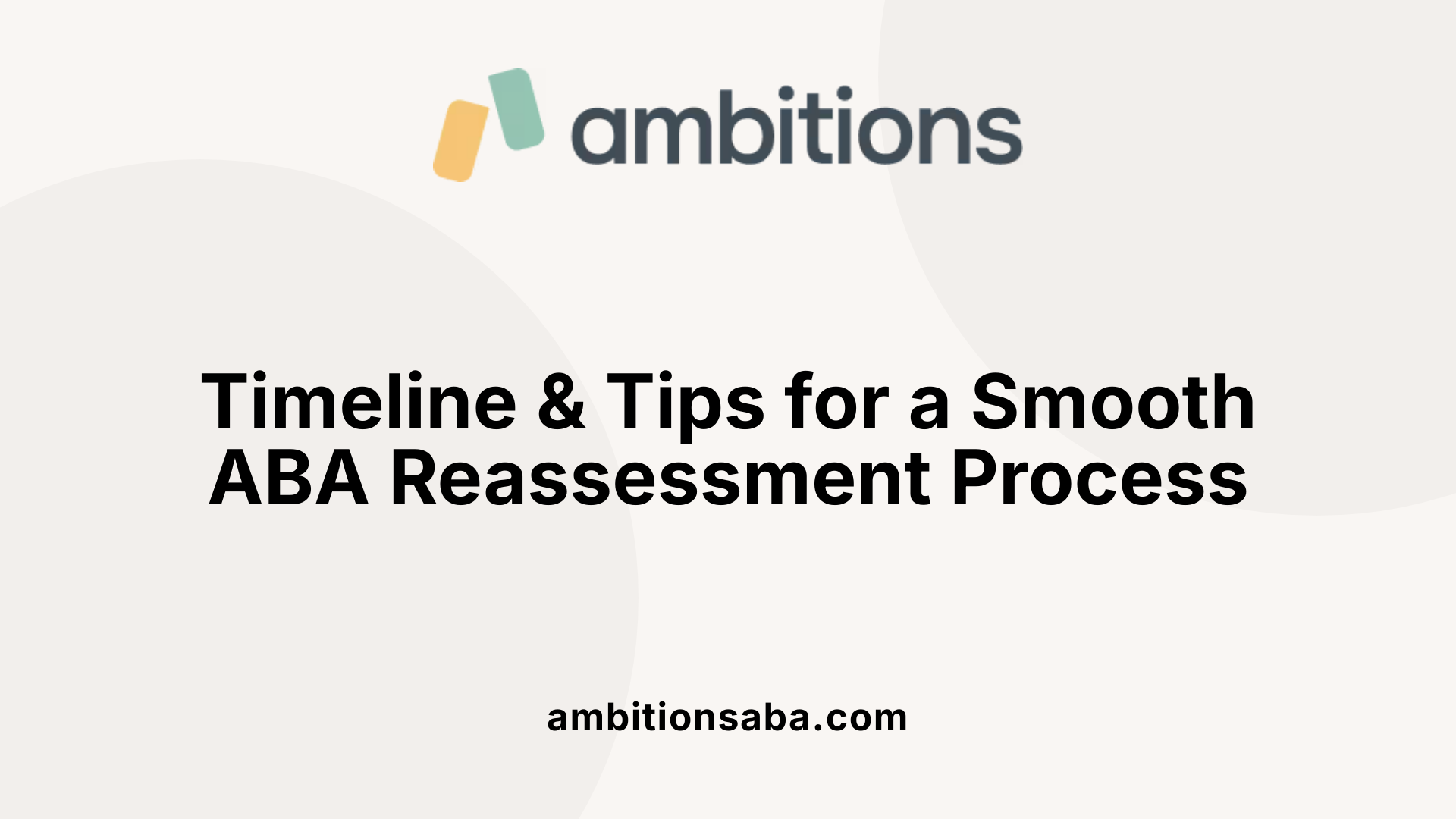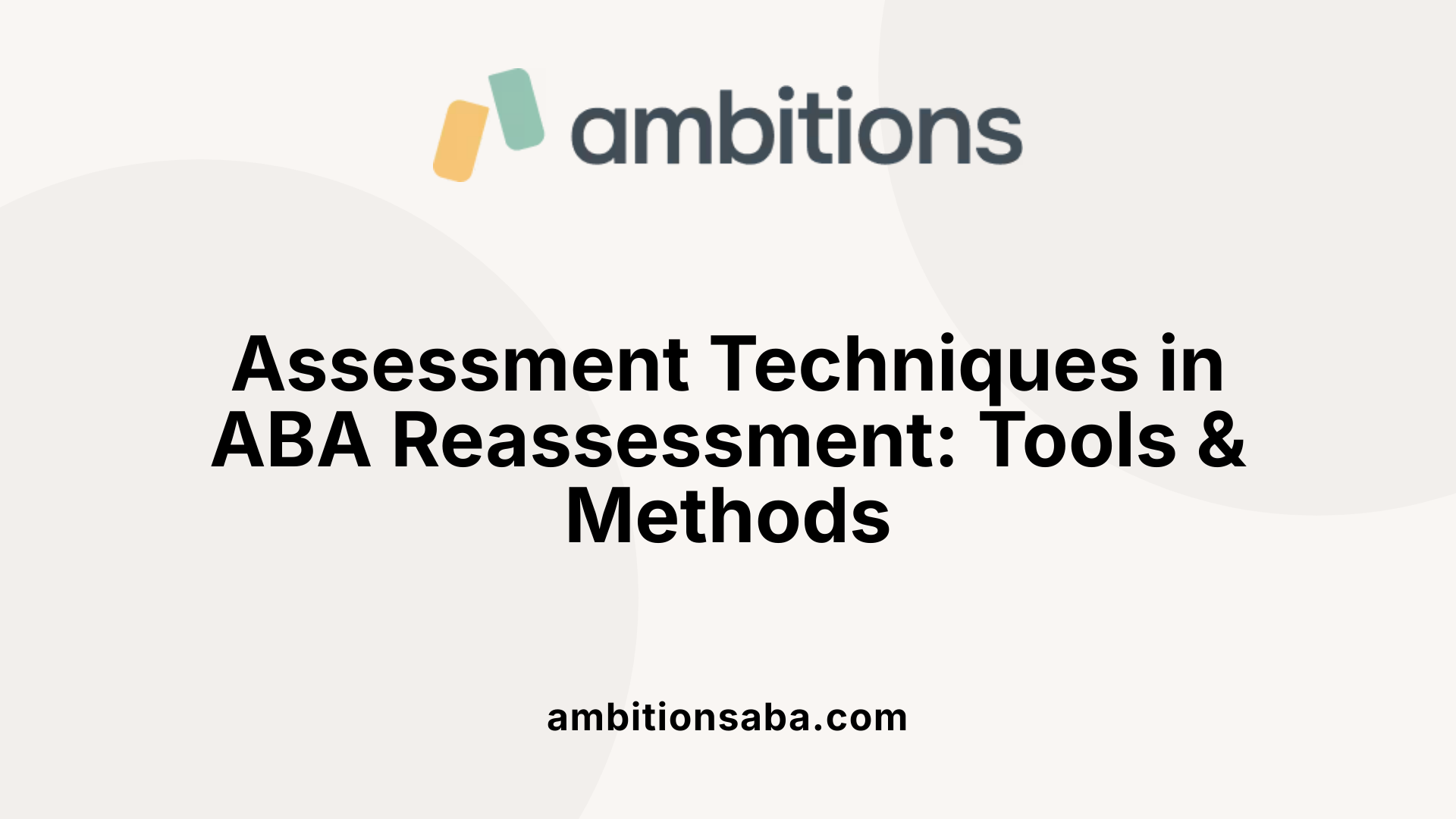Understanding the ABA Reassessment Process
ABA reassessment is a critical component of effective therapy, ensuring that interventions remain aligned with the individual's evolving needs and promoting continual progress. This article explores what to expect during a typical ABA reassessment, including procedures, tools, timelines, and how these evaluations influence treatment plans.
The Purpose and Goals of an ABA Reassessment

What are the main goals and purposes of an ABA reassessment?
An ABA (Applied Behavior Analysis) reassessment serves several important functions in the ongoing treatment process for individuals receiving therapy. Its primary purpose is to evaluate how effective the current interventions are in helping the individual achieve their goals. This involves a thorough review of progress made, behaviors observed, and the overall impact of the therapy.
During the reassessment, clinicians analyze data collected from ongoing treatment activities. They review skill development, behavioral changes, and treatment effectiveness to determine if current strategies are successful or if modifications are needed. The process includes considering the individual’s unique needs and the progress toward specific goals.
Measuring individual progress is crucial in maintaining a tailored approach. Reassessment provides insight into what has been achieved and identifies areas where challenges persist. For example, it can highlight skills acquired, behaviors reduced, or areas that require further support.
Another vital aspect is ensuring that the treatment goals remain appropriate as the individual develops. Children and adults may evolve in their abilities and needs, so goals should be regularly updated based on current assessments. This helps keep therapy relevant and effective.
Reassessments also identify ongoing challenges and areas of growth. This can include new behavioral issues or difficulties that emerge over time. Recognizing these allows clinicians to adapt treatment plans, using data and behavioral analysis to refine intervention strategies.
By continuously refining treatment plans, the reassessment helps maximize positive outcomes. It ensures that therapy remains evidence-based and closely aligned with the individual’s evolving needs. Adjustments made during reassessment can include changing activities, targeting new skills, or modifying behavioral protocols.
Overall, the purpose of an ABA reassessment is to promote continuous improvement, accountability, and personalized care. It supports collaboration among therapists, caregivers, and the individual to create an effective, dynamic treatment environment focused on maximizing independence, learning, and quality of life.
Timeline, Scheduling, and Preparation for Reassessment

What is the timeline and scheduling involved in an ABA reassessment?
Reassessments in Applied Behavior Analysis (ABA) are generally conducted every six months, although the schedule can be adjusted based on the child's progress and specific clinical needs. An initial assessment is followed by routine evaluations that help determine whether treatment goals are being met and if modifications are necessary.
Scheduling is often managed ahead of time, sometimes several weeks in advance, to coordinate the involvement of all relevant stakeholders such as caregivers, therapists, and medical providers. These evaluations typically last from a few hours up to an entire day, depending on the child's complexity and the scope of assessments.
During a reassessment, clinicians review progress data, analyze behavioral trends, and evaluate the effectiveness of current interventions. The goal is to ensure that the child’s treatment plan remains aligned with their evolving needs. Some cases may require more frequent reviews, such as every three months, especially if significant behavior changes are observed or if the treatment plan needs urgent adjustments.
Proper scheduling is crucial to avoid delays in service authorization and to ensure continuous support. Many agencies use specialized software to facilitate calendar management, reminders, and coordination among team members.
What documentation and preparation are required for an ABA reassessment?
Preparation for an ABA reassessment involves collecting comprehensive documentation, including prior assessment reports, progress notes, and treatment plans. Reviewing this information allows clinicians to identify behavioral changes, assess goal attainment, and plan future strategies.
Key steps include:
- Analyzing collected data for patterns and progress.
- Reviewing prior treatment goals and objectives.
- Arranging interviews with caregivers and team members.
- Conducting direct observations or standardized assessments as needed.
Stakeholder involvement is essential. Ensuring caregivers and team members are available to provide input and participate in assessments enhances the accuracy of the evaluation. Clinicians also prepare by outlining specific behavioral functions to investigate, clarifying the purpose of behaviors, and determining which assessments to utilize.
Using structured report templates, quality assurance checklists, and compliance guidelines helps in producing thorough documentation. This documentation supports the medical necessity of services, informs updates in the treatment plan, and demonstrates adherence to standards and protocols.
Timely submission of all necessary records and well-organized preparations help prevent delays in authorization processes and ensure that services can continue smoothly without interruptions.
Conducting the Assessment and Evaluation Methods Used

What assessment tools and methods are typically used during an ABA reassessment?
During an ABA reassessment, professionals utilize a combination of validated assessment tools and observational techniques to evaluate a child's progress and refine their treatment plan. Standardized instruments such as the Vineland-3, VB-MAPP, ABLLS-R, FAST, MAS, FAI, and Q-ASC are regularly employed to measure skill development, behavior frequency, and adaptive functioning. These tools provide structured, quantifiable data that help track improvements and identify areas needing further intervention.
In addition to formal assessments, clinicians conduct direct observations and structured interviews. Observing the child in different settings allows therapists to see how behaviors manifest naturally and how environmental factors influence responses. Interviews with caregivers and teachers offer valuable insights into daily challenges, behavior triggers, and progress outside of clinical settings.
Reviewing previous treatment records and ongoing data collection is essential for understanding how the child has responded to interventions over time. This documentation helps identify patterns, measure success, and plan future steps.
Functional Behavior Assessments (FBA) play a crucial role by analyzing the environmental variables and purpose behind specific behaviors. This process involves detailed analysis of antecedents, behaviors, and consequences to develop targeted, individualized intervention strategies.
Reassessment is inherently collaborative and tailored to each child's unique needs, incorporating multiple sources of information. Combining standardized testing, direct observation, caregiver input, and environmental analysis ensures a comprehensive understanding of the child's current abilities and challenges. This approach helps clinicians make informed decisions that promote meaningful progress in therapy and support overall development.
Impact of Reassessment on Treatment Planning and Adjustments
How does an ABA reassessment influence treatment planning and adjustments?
Reassessment is a fundamental component of effective ABA therapy. It allows clinicians to evaluate the child's progress by analyzing current data trends, assessing whether treatment goals are being achieved, and identifying areas that require changes. Typically conducted every six months, these evaluations ensure that interventions stay responsive to the child's evolving needs.
During a reassessment, the behavior analyst reviews a variety of outcome measures, including parent and teacher reports, the Vineland-3 assessments, and direct observations. This comprehensive review helps determine which strategies are successful and which need modification, such as adjusting the intensity of some interventions or introducing new skill targets.
Updating treatment plans based on reassessment findings ensures that therapy remains goal-oriented and effective. For instance, if certain behaviors are not decreasing as expected or if new challenges emerge, treatment protocols are adapted accordingly. This might involve refining behavioral interventions, altering reinforcement strategies, or emphasizing different skill areas.
Furthermore, reassessments facilitate the integration of caregivers and teachers’ insights, promoting the generalization and maintenance of skills across settings. Such ongoing evaluations foster a dynamic therapy process, keeping interventions evidence-based, personalized, and aligned with the child's current developmental status.
In summary, regular ABA reassessments act as a vital feedback loop that shapes treatment adjustments, ensures continuous progress, and sustains the relevance and effectiveness of the intervention plan.
Reassurance Through Structured Evaluation
A comprehensive ABA reassessment is a vital process that ensures therapies are effective, goals are appropriate, and progress is on track. By adhering to standardized procedures, utilizing a range of assessment tools, and maintaining ongoing communication with caregivers and clients, licensed professionals uphold the highest standards of care. This systematic approach not only fosters continuous improvement but also provides families with reassurance that the intervention plan remains personalized, data-driven, and scientifically supported, ultimately enhancing outcomes and quality of life for individuals receiving ABA services.
References
- ABA Authorization Process | Humana Military
- Frequently Asked Questions - ABA Coding Coalition
- In-Home ABA Therapy - Surpass Behavioral Health
- [PDF] Applied Behavior Analysis FAQs - Virginia Medicaid
- Primary Children's Applied Behavior Analysis Clinic - Riverton
- What is ABA Therapy? - Journey ABA
- What To Expect | Judson Center
- The Importance of Reassessment in ABA Therapy



